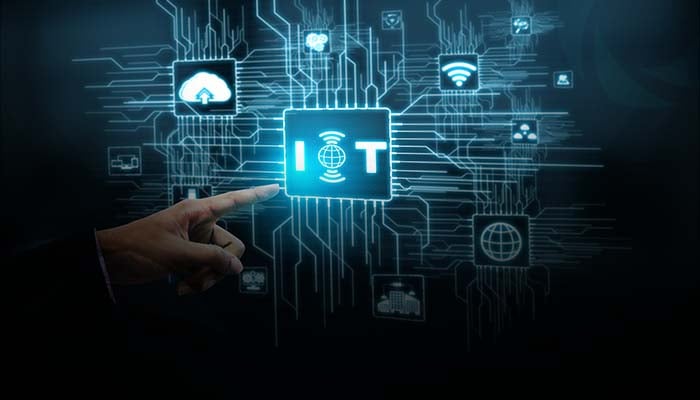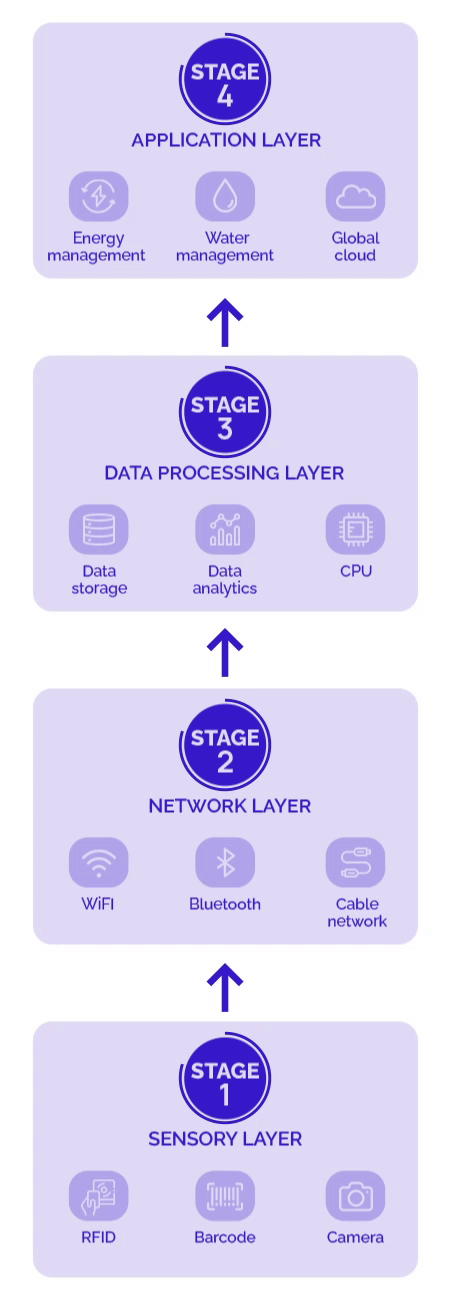IoT | 20 May 2022 | 10 min
What is IoT?

Are we becoming more brilliant or lazier by the day? Housed cosily on a sofa, there is a device that can help me dim the lights or turn the volume up or down, another device reminds me I need to shop for groceries, and I can even answer the doorbell sitting down right there. If that is not all, there’s apparently an oven that can think for itself, a refrigerator that monitors what I store in it … I can go on… that is the Internet of Things (IoT) for you.
I have a feeling that IoT started when someone saw a Disney movie and thought to themselves if animals could talk, then why not devices – brilliant mind! Fact distortion alert that!
We all know that IoT is when a number of devices are connected to each other and can transfer data amongst themselves without having a human passing down those boxes in between them. So how does any device get the capability of an IoT device – as in how my printer knows what to print when I only told my laptop what to do, or how come losing my sleep mid-flight about the lights or the gas being on is no longer a possibility.
This is a general framework atop which an IoT solution can be built:

IoT like I said is in everything we own around us and has been applied across all industries, what they call Industrial Internet of Things (IIoT). I am going to take this IoT story a little further and give you some examples of where it has been used – some are pretty normal; some can be plain bizarre.
I started with this one since it’s probably closest to all of us. With everyone running, eating, and sleeping with it- wearables have become somewhat essential in monitoring health, fitness, and heart rates. Telehealth, remote patient monitoring, smart labs, or even IoT-enabled healthcare equipment monitoring these are all good examples of where IoT is being used in the healthcare industry.
This one is a little bit different and on a lighter note. It is a connection that was hitherto unthought of – but it has to do with what goes inside comes outside. Yep, a smart toilet. So, through these connected toilets there is a possibility to detect early diabetes, cholesterol, cardiac diseases, and host of other illnesses that need poop – I mean proof.
Since it deals with mass production and serving the right people at the right time, IoT-led predictive maintenance can help a lot of time and money by helping manufacturers track not only the current status of a machine, but also predicting when things are about to go awry.
Wearables can also play a big role in manufacturing with smart glasses worn by field technicians that send real time pictures to those sitting remotely who can then help with troubleshooting.
IoT is used to track industrial assets, to better the supply chain, and manage inventory in the manufacturing industry.
It is all about the experience in retail – this is one industry where customer experience can make or mar the product. Being innovative is key and instore IoT sensors give a huge chunk of information to the brand helping it identify customer journeys and make popular recommendations based on the analysis.
There are also some big names who have taken the help of IoT to predict wait times in the store and then offering a variety of wonderful activities to keep you right there till its time!
IoT has taken energy to a very different plane – through smart metering and forecasting it has helped transition from fossil fuels to solar power-based energy grids.
IoT has taken over not just the Cloud but also those white cotton-like vapours up there in the sky – it can be used to predict the intensity of rains and help monitor climatic changes across the globe.
Each day there are new connections and newer thresholds crossed from connected coffee machines to intelligent refrigerators to a future with AIIoT and Big data. Combined with AI, IoT can help give way for smarter cities, smarter industries, next-level wearables, and smarter homes.
As far as big data is concerned, if researchers are correct, by 2025, IoT devices will have helped generate 73.1 ZB (zettabytes) of data [that is in human language – as much information as there are grains of sand on all the world’s beaches]. This means the need for even more advanced data storage technologies to help develop systems that can process larger volumes of data.
Apparently, podcasts are a thing, so I have decided to also give some free technology 101 in 1 minute. Watch this space for my podcast on IoT. If you would like me to talk about other technologies as well, then write to us. Also, you can visit our website to know more about our services.

we'll keep you in the loop with everything that's trending in the tech world.
